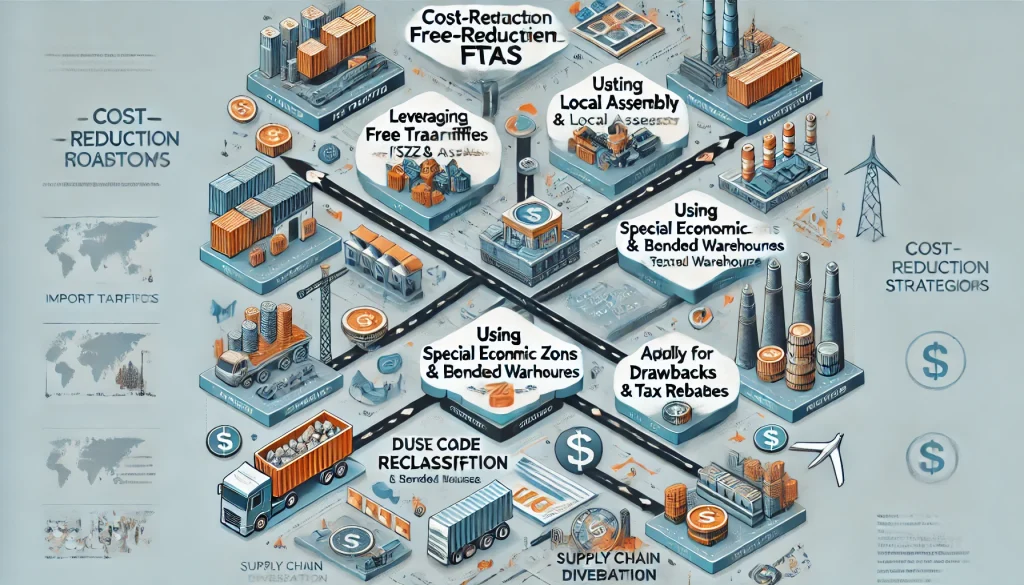Transport in the Fabrication of Manufactured Parts
Manufacturing mechanical, textile, or industrial products typically involves multiple transportation stages, including:
1. Raw Material Procurement – Transport of raw materials (metals, fabrics, polymers, etc.) from mines, refineries, or suppliers to production facilities.
2. Intermediary Production – Semi-finished parts may be shipped between suppliers for specialized processes (e.g., heat treatment, precision machining, or chemical processing).
3. Final Assembly & Packaging – Transporting finished or semi-finished components to final assembly plants.
4. Distribution & Export – Shipping finished products to warehouses, retailers, or end customers through domestic or international logistics networks.
Each transport step adds logistical costs, custom duties, and lead-time constraints, impacting overall production expenses.
---
Impact of Tariff Rules & Importation Taxes
New tariff regulations and import taxes have significant consequences, such as:
- Increased Costs – Higher import duties on raw materials and components raise the total cost of production.
- Supply Chain Disruptions – Complex customs procedures cause delays, especially with changing trade agreements (e.g., US-China trade war, Brexit).
- Reshoring & Nearshoring Trends – Companies are shifting production closer to consumption markets to avoid tariffs and reduce lead times.
- Compliance Costs – Businesses must invest in trade compliance and customs management to avoid penalties and delays.
Example: The textile industry is particularly affected by tariffs on cotton and synthetic fibers, while mechanical parts face taxes on imported steel, aluminum, and precision components.
---
Cost Reduction Strategies through Process Optimization
1. Supply Chain Optimization
- Reduce unnecessary transportation steps through supplier consolidation or vertical integration (owning more production stages).
- Use regional suppliers to reduce tariffs and customs duties.
- Implement Just-in-Time (JIT) logistics to minimize inventory and storage costs.
2. Manufacturing Process Improvements
- Automate repetitive tasks using robotics and AI.
- Implement lean manufacturing to eliminate waste (Kaizen, 5S, Value Stream Mapping).
- Standardize components across product lines to reduce procurement costs.
3. Digitalization & Industry 4.0
- Deploy IoT-enabled predictive maintenance to minimize downtime.
- Use ERP, CMMS, and BI for real-time tracking of material and process efficiency.
- Implement digital twins to simulate and optimize production processes.
4. Outsourcing & Offshoring Strategy
- Relocate labor-intensive tasks to low-cost regions while maintaining quality control.
- Use contract manufacturing to avoid heavy capital investment in new facilities.
- Negotiate free trade zone (FTZ) advantages to reduce tax burdens.
5. Sustainable & Circular Economy Approaches
- Reduce material waste through recycling and reusability.
- Use eco-efficient transport modes (e.g., sea freight vs. air cargo).
- Implement green energy sources to reduce long-term operating costs.
---
Here's an example of a table outlining the estimated tariff costs by market for various industries (mechanical, textile, and industrial products). These estimates will vary depending on the country of origin, product category, and evolving trade policies. It is essential to verify specific tariff codes for precise calculations.

Notes:
- Mechanical products generally have a wide range of tariffs, depending on the complexity of the product and its classification.
- Textiles often face higher tariffs, especially on finished goods like garments, which may be subject to protectionist policies in many markets.
- Industrial products often have lower tariffs, but it depends on the product's classification (e.g., raw materials versus finished machinery).
To get a more accurate tariff cost, it’s essential to refer to specific Harmonized System (HS) codes for the product in question and check the latest trade agreements or government publications for any changes.
Our Full Report:




